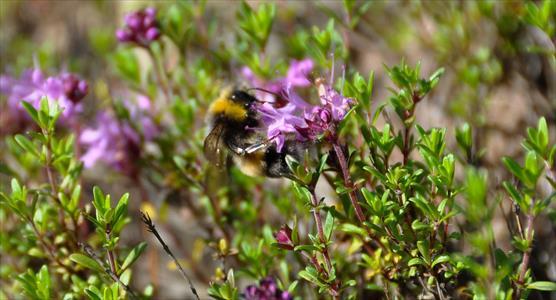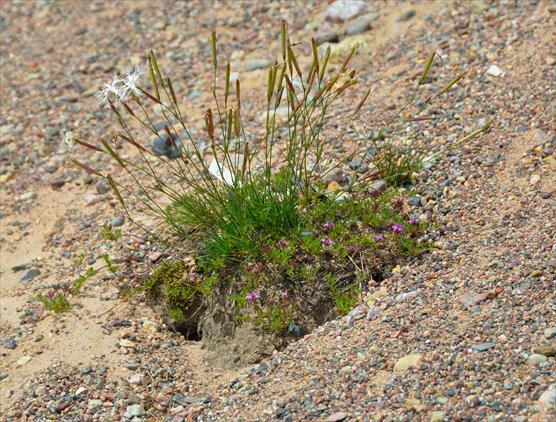Intensive land use can diminish nature values, threaten the long term survival of species and even undermine the functioning of entire ecosystems. With increasing pressure to use land for human needs, new methods to reduce the conflicts between nature conservation and land use are urgently needed. The aim of the Ecosystem Hotel project is to develop and test methods for mitigating biodiversity losses and investigate the potential of ecological compensations in safeguarding biodiversity.
An Ecosystem Hotel offers a sanctuary for a small scale ecosystem during changes in land use. In practice, parts of the target ecosystem are transferred as species assemblages to a suitable nearby location before the land-use change – for example a construction project. The long-term objective is to restore the ecosystem back to the original site after the disruptive project has been completed.
The first Ecosystem Hotel was established to protect a valuable roadside ecosystem through the process of a highway construction at Raasepori area. The target ecosystem consists of heat-tolerant plants and insects that inhabit open, sun-exposed eskers and dry meadows. The natural habitats of such species have declined to an extent that many of them have already become rare or endangered. Thus, securing the survival of the species in our pilot study is relevant from the perspective of nature conservation and halting biodiversity loss in general.
The core aim of this research project is to pilot and develop the Ecosystem Hotel operations model – for example establishing which authorities, interest groups and operators should be involved in the process. The research focus is in planning the ecosystem transfers, monitoring species survival and data analysis. In addition, we examine more generally the feasibility of different methods of ecological mitigation and compensation.
Another important aspect of the project is co-operation with interest groups. Ecosystem transfers, for example, are conducted in close co-operation with business partners. The main partner in the pilot case is Rudus Ltd, which provides the first Ecosystem Hotel site and conducts the species transfers together with collaborators. The Finnish Environment Institute SYKE is responsible for the project coordination, planning and scientific research.

Bumblebee on wild thyme. © Picture: Minna Pekkonen
|
Flora at the sun-exposed eskers of the first Ecosystem Hotel
At the Ecosystem Hotel pilot site at Raasepori, the transferred heat-tolerant plant species seem to be thriving. Using an excavator, we have conducted two transfers from the roadside. The transfer sites included certain target species: sand pink (Dianthus arenarius, Endangered; EN) and wild thyme (Thymus serpyllum, Near Threatened; NT). The target species and the surrounding vegetation were dug up in as large clods as technically possible to minimize the harm to the root systems and dormant insects that potentially overwinter near these plant species.
Both target species have survived well at the Hotel location, based on the monitoring during the two summers after the transfer in November 2014. Sand pink survived at 93% and wild thyme at 81% of the transferred clods. Both species have also flowered and reproduced from seeds at the new site. Other heat-tolerant species that have been identified at the Hotel site include Erigeron acer, Tanacetum vulgare and Pilosella officinarum.
The second transfer to the Ecosystem Hotel was carried out during the late autumn in 2015. After the first overwintering, at least one of the target species (Dianthus arenarius, Thymus serpyllum and/or mountain everlasting Antennaria dioica (Near Threatened; NT) flowered in all transferred clods.
We have also tested transferring parts of the mountain everlasting a.k.a. catsfoot population from the roadside to the Ecosystem Hotel with more simple tools; a spade and a wheelbarrow. The dry and warm spring of 2016 was challenging for the transferred plants, but the catsfeet have survived relatively well based on monitoring during the late summer and early autumn of 2016. The following years will give a better estimate on whether catsfeet start to feel at home at the Ecosystem Hotel.
The goal is that all the transferred plant species will produce seeds and form viable populations at their new location. Then, hopefully, insects specialized on these plants will follow. The progress of the ecosystem and the survival of its species are monitored throughout the project. The plan is to return these species back to the roadside, but when this will take place depends on the timing of the road construction project.
|
Tweets (mostly in Finnish) on Ecosystem Hotel with #ekohot.
More information
Researcher Minna Pekkonen, Finnish Environment Institute SYKE, phone 0295 251 779 firstname.lastname@syke.fi
Senior Researcher Terhi Ryttäri, Finnish Environment Institute SYKE, phone 0295 251 585 firstname.lastname@syke.fi
Director Petri Ahlroth, Finnish Environment Institute SYKE, phone 0295 251 054, firstname.lastname@syke.fi

Sand pink and wild thyme at the sunny esker of the Ecosystem Hotel. © Picture: Minna Pekkonen